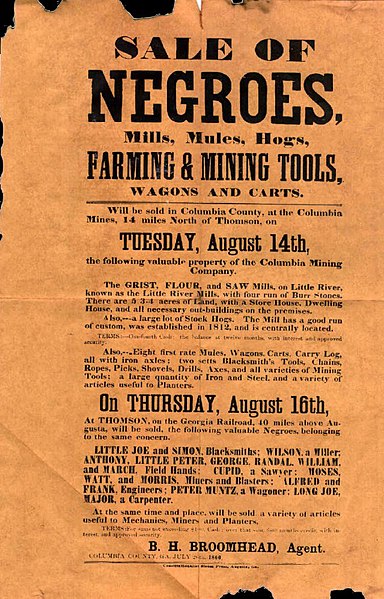Manumission, or enfranchisement, is the act of freeing slaves by their owners. Different approaches to manumission were developed, each specific to the time and place of a particular society. Historian Verene Shepherd states that the most widely used term is gratuitous manumission, "the conferment of freedom on the enslaved by enslavers before the end of the slave system".
Relief depicting the manumission of two slaves, with pileus hats (1st century BC, Musée royal de Mariemont).
Original manumission for Gowan Pamphlet of the Colony of Virginia, which freed him from slavery. Signed by his owner, David Miller. c. 1793
Letter where one can read that the slave Geraldo will be free with the condition of working for another 6 years (Brazil). Arquivo Público do Estado de São Paulo|APESP
Slavery is the ownership of a person as property, especially in regards to their labour. Slavery typically involves compulsory work, with the slave's location of work and residence dictated by the party that holds them in bondage. Enslavement is the placement of a person into slavery, and the person is called a slave or an enslaved person.
Gordon, a slave from Louisiana, in 1863. The scars are the result of a whipping by his overseer.
Flogging a slave fastened to the ground, illustration in an 1853 anti-slavery pamphlet
A poster for a slave auction in Georgia, U.S., 1860
Portrait of an older woman in New Orleans with her enslaved servant girl in the mid-19th century







